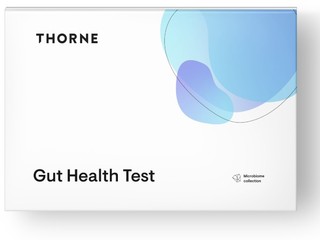 As the markets have shrunk in 2022, there has been a visibile slowdown in tech and VC funding has fallen to its lowest level in years. The biggest impact, though, has been in companies choosing to go public or not: total IPO volumes fell 90.4% in the first nine months of 2022, compared to 2021. In fact, IPOs have fallen to their lowest level since the financial crisis of 2008, while the $507 million raised is the lowest amount since 2000.
As the markets have shrunk in 2022, there has been a visibile slowdown in tech and VC funding has fallen to its lowest level in years. The biggest impact, though, has been in companies choosing to go public or not: total IPO volumes fell 90.4% in the first nine months of 2022, compared to 2021. In fact, IPOs have fallen to their lowest level since the financial crisis of 2008, while the $507 million raised is the lowest amount since 2000.
That’s been especially stark in healthtech: in 2021 there were at least 15 companies that went public, either through an IPO or SPAC, compared to seven healthtech IPOs in 2019, and eight in 2020. In 2022, that number fell to zero in the first half of the year.
One of the few in the space to go public this year is Thorne HealthTech, which calls itself a “science-driven wellness company” that is utilizes testing and data to create improved product efficacy and deliver personalized solutions to consumers, health professionals, and corporations.
Thorne’s products include health tests, education and nutritional supplement products. Customers can take Thorne’s tests at home, which can be dropped of for free, or they can be taken in a third party lab, such as Quest Diagnostics; that includes tests focused on sleep, stress, weight management, gut health, heavy metals, and biological age.
After getting the results, Onegevity, a platform that combines AI with professional human assistance to map, integrate and understand the billions of dynamic biological features that illustrate the state of an individual’s health then turns those insights into a personalized plan for how to eat, exercise, and choose supplements based on that person’s unique needs. Thorne merged with Onegevity in February of 2021.
“We believe that a personalized and scientific approach to wellness can lead to happier and healthier lives. Our goal is to transform the consumer’s approach to health and wellness and empower our customers to live healthier longer, which we refer to as increased health span, through testing, teaching and proactive measures that help our customers avoid chronic health conditions before they occur and achieve peak performance,” the company wrote in its S-1 filing with the SEC.
Thorne makes it money through three types of sales of its product: DTC subscription, DTC transaction, and professional/B2B.
The largest of these is professional/B2B sales, through which the company sells to wholesale customers that include health professionals, retail stores and through various online sites operated by authorized resellers, such as Emerson Ecologics, iHerb, and Biote Medical.
In 2020, the company made $84.8 million from its B2B sales segment, which accounted for over 61% of its total $138 million in revenue.
The second largest segment is DTC transaction sales, in which the company sells its tests and supplements direct to consumers online through its own website. Revenue from online sales is recognized at time of shipment of the product, while testing services and testing kits are recorded as revenue when the testing results are provided to the customer. In 2020, company made $38.2 million, or 27.6% of its total revenue, from this segment.
Finally there are DTC subscription sales, in which the Company offers its customers the ability to opt into recurring automatic refills on both Thorne.com and Amazon.com. Revenue is recognized when the product is shipped to the consumer, and the company doesn’t collect any funds when a consumer signs up to receive a shipment which can be sent either monthly, every 45 days, every two months, every three months, or every four months.
In all, this segment brought in $15.4 million, or 11.1% of revenue in 2020.
Thorne says there are two typical consumer pathways to get consumers to buy its products for the first time; the most common pathway is through its Thorne educational platform, where a consumer searches for a specific ingredient, health concern or product, and then lands on its website to learn more through a target ad or positive media content. An interested consumer typically purchases one to two nutritional supplement products on average, with an average price of $30.70, either through its website, app or third-party site, such as Amazon.
The second path occurs when a consumer searches for a data-driven approach to determine the best product to meet their needs. These consumers also typically find Thorne’s website due to targeted advertising or positive media content and purchase one health test for an average price of $182.30. This consumer then goes through the process of taking and sending the test; from there, the consumer converts and purchases on average one to two of the company’s supplement products. After taking one of its tests, over 30% of consumers convert to using Thorne’s recommended products.
“As a result of our merger with Onegevity, we expect that the traffic to our websites through this second pathway to continue to increase and to realize increasing revenue as a result of the synergy with our Thorne products,” the company wrote.
In 2021, Thorne made a total of $185 million in revenue, 40% of which came from DTC and 60% of which came from B2B.
Thorne HealthTech’s shares began trading on the Nasdaq on September 23, 2021, under the ticker symbol “THRN.” It priced its shares at $10, and raised approximately $70 million.
(Image source: thorne.com)
















